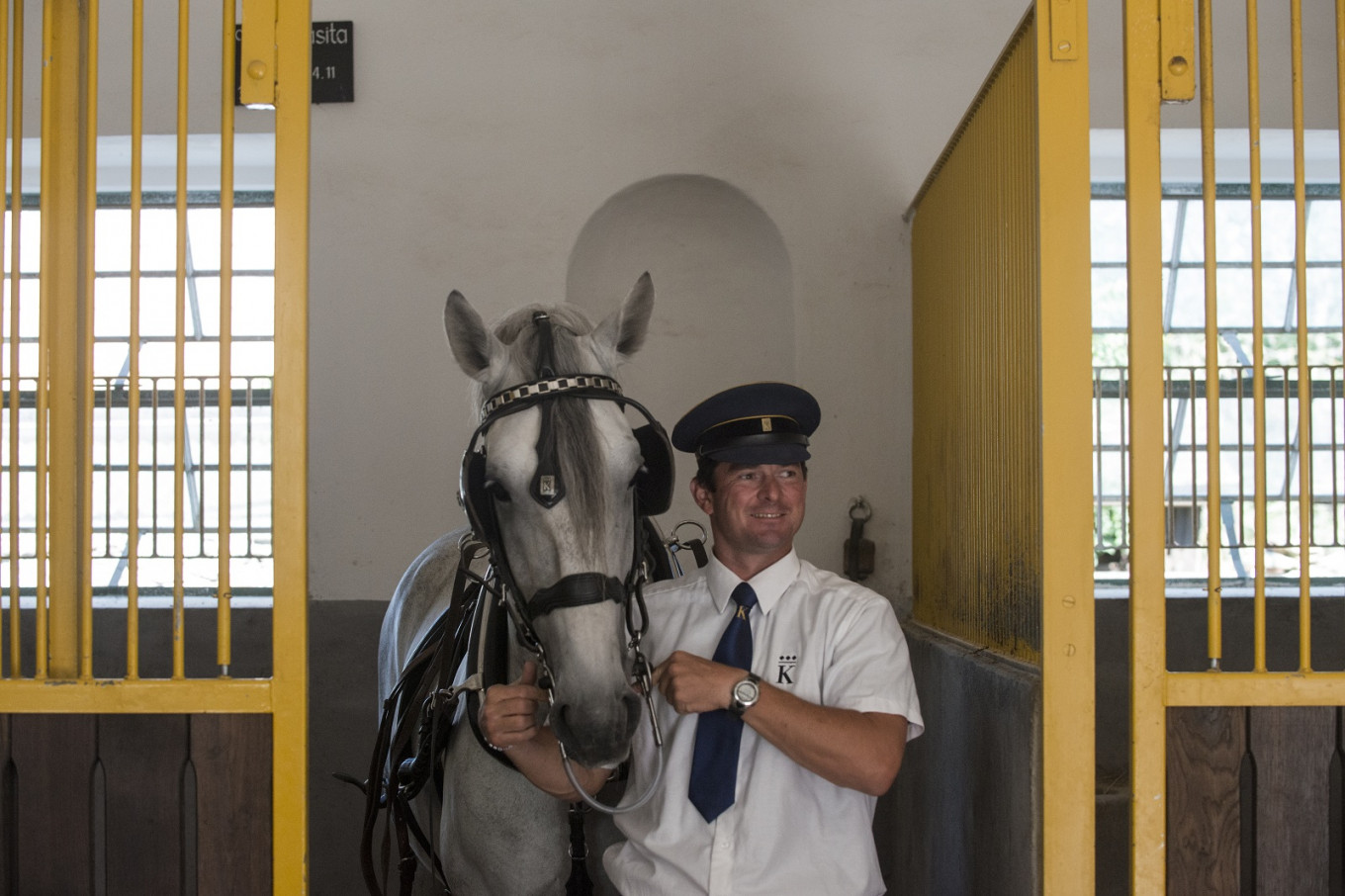Popular Reads
Top Results
Can't find what you're looking for?
View all search resultsPopular Reads
Top Results
Can't find what you're looking for?
View all search resultsOldest Czech stud farm gallops onto UNESCO list
The Czech Republic's national stud farm made it onto the UNESCO world heritage list thanks to a unique landscape of flat, sandy soils, fields, pastures and forest where horses have been bred for at least five centuries, its director said on Wednesday.
Change text size
Gift Premium Articles
to Anyone
 Photo taken on July 10, 2019 shows a Kladruber horse being led from his stable in Kladruby and Labem town. The Czech Republic's national stud farm made it onto the UNESCO world heritage list thanks to a unique landscape of flat, sandy soils, fields, pastures and forest where horses have been bred for at least five centuries, its director said on July 10, 2019. (AFP/Michal Cizek)
Photo taken on July 10, 2019 shows a Kladruber horse being led from his stable in Kladruby and Labem town. The Czech Republic's national stud farm made it onto the UNESCO world heritage list thanks to a unique landscape of flat, sandy soils, fields, pastures and forest where horses have been bred for at least five centuries, its director said on July 10, 2019. (AFP/Michal Cizek)
The Czech Republic's national stud farm made it onto the UNESCO world heritage list thanks to a unique landscape of flat, sandy soils, fields, pastures and forest where horses have been bred for at least five centuries, its director said on Wednesday.
"It is the only landscape preserved and used for its original purpose," of horse breeding, stud farm director Jiri Machek told AFP.
UNESCO announced on Saturday it was adding the farm to the World Heritage List, describing it as a "Landscape for Breeding and Training of Ceremonial Carriage Horses at Kladruby nad Labem".
Horse breeding in the town of Kladruby nad Labem around 60 kilometers (40 miles) east of the capital Prague dates back to the Middle Ages, he added.
It gave rise to a stud farm founded by the ruling Habsburg dynasty in the 1560s when Czech lands were governed from Vienna.
"In 1579 it was promoted to the imperial stud farm to breed horses for Rudolph II's imperial court," Machek added.
A UNESCO statement described the farm as "one of Europe's leading horse-breeding institutions, developed at a time when horses played vital roles in transport, agriculture, military support and aristocratic representation.
"The site consists of flat, sandy soils and includes fields, fenced pastures, a forested area and buildings, all designed with the main objective of breeding and training Kladruber horses, a type of draft (work) horse used in ceremonies by the Habsburg imperial court."
Read also: What to know about the Ombilin coal mine in Sawahlunto
The national stud farm comprises the Kladruby farm, breeding about 250 white horses, and another farm in the nearby town of Slatinany, which breeds roughly the same number of black horses.
Local horses are used as ceremonial animals, particularly in the Swedish and Danish royal courts, and also by police in Czech cities.
The stud farm is the 14th Czech site on the UNESCO World Heritage list, alongside the centres of Prague and the picturesque southern city of Cesky Krumlov, as well as the northwestern mining Krusnohori region also listed last week.
Covering an area of 1,310 hectares (3,200 acres), the Kladruby farm attracted 65,000 visitors last year.
"Given the UNESCO listing, we expect visitor numbers to increase," said Machek.






